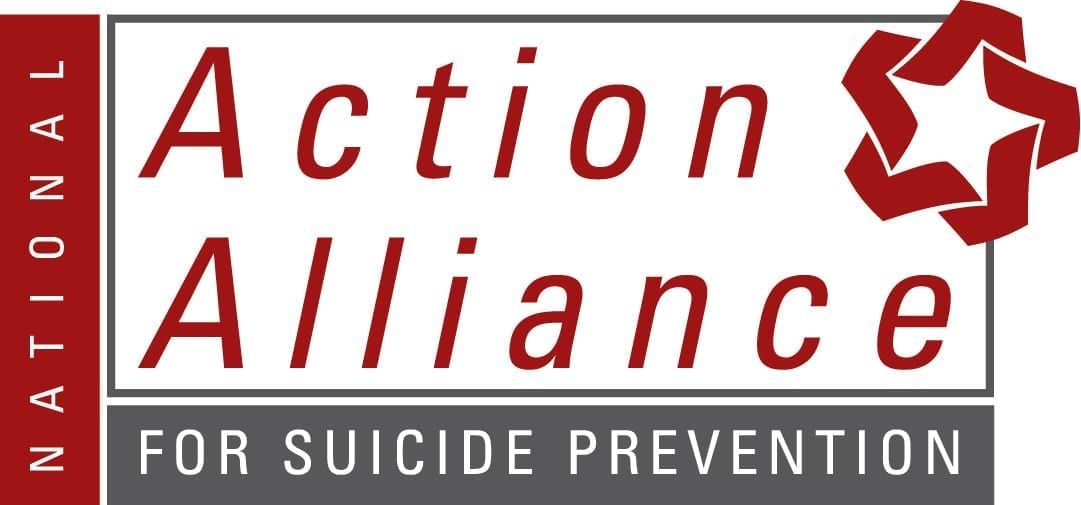
Chapter 1 Resources
For Family Members
Reflections from Lex:
"What I Learned as a Family Member"
I thought I was doing the right thing all those years, dealing with Kay’s depression and anxiety on my own, without seeking support for myself. I think it was because I didn’t want anyone to know what she was going through. She cared so much about others and not wanting to be a burden to anyone that she would always put on a happy face in public. They couldn’t see her struggle, but I could. As things worsened, I worried more but I didn’t know what to do differently to help her. So, I kept trying to do what I had always done.
We would talk things over. I did some research and read some books on depression and mood disorders. I thought I was protecting Kay by not letting others know about her struggles. I also kept rationalizing that it wasn’t that bad. After all, she was well-liked in the community, working full-time, serving in our church and with non-profit agencies. She had many good weeks in between bouts of serious depression and anxiety.
I didn’t talk to any of my friends, relatives or church leaders because I didn’t think it was my place to reveal what Kay was going through. I especially didn’t want to tarnish her reputation with anyone. I didn’t want anyone to think less of Kay because of her inner struggles. I now realize this is what stigma does. It causes us to be ashamed to speak out.
I’ve always admired Kay’s headstrong determination and persistence. She has high standards for herself and wants to do things well. These are positive personality traits. At the same time, these traits also caused her to put too much pressure on herself at times. She tends to be a perfectionist. I’ve since learned that when a perfectionist feels anxious, they think the solution is to do more - whether it is more organizing, cleaning, working or whatever it is that makes them feel better about themselves. This can become a vicious cycle.
Also, at first, I didn’t recognize what Kay was dealing with was a serious mental illness. It took a very long time for this realization to slowly settle in, along with the knowledge that this is something we must take seriously and we will need to manage for the rest of our lives.
When I finally opened up and talked to others and received support, it was a huge relief. Looking back, I know that I did it wrong. I was trying to protect her yet I should have reached out for help and support much sooner. I thought I would be betraying Kay if I told someone what I was going through myself. That was a mistake. That was caused by the stigma of mental illness.
I also thought incorrectly that I could get her through this - that I could “fix” this. I’m a fixer. I fix problems all day at work and I thought I could fix this, too. I was wrong. I have finally learned and accepted the fact that I can’t fix it. I can hold space. I can listen. No one asks to be mentally ill. Our loved ones with mental illness need our support and understanding. I now tell family members and caregivers that they too need support and it’s okay to reach out for help, nor just for your loved one, but for yourself, too. I remind them that they can’t fix it and they can’t go it alone.
I started speaking to audiences with Kay about mental illness, suicide and the lessons I learned along the way. The reason I speak out is because people don’t know what they don’t know. I don’t want them to make the same mistakes I made. I don’t want others to carry with them the “if onlys” the way I do. If only, I had known better than to believe she was getting better that morning before I left, if only, I had known that it wasn’t safe to leave her alone that day, if only, I had been more attuned to her real mental and emotional states, if only, I had reached out for support and help for myself or for her sooner, if only, I had taken her to the hospital the night before…
I have since learned how to be more helpful by listening to understand Kay, instead of trying to fix her. I have continued learning and reading books. After reading about L.E.A.P. (Listen, Empathize, Agree, Partner) by Dr. Xavier Amador. I now acknowledge that early on I triggered her a lot because I didn’t understand how to relate to her when she was depressed or anxious. A
As with other kinds of chronic illnesses, the same is true with Kay’s illness. She will always have it and it will have to be managed the rest of her life. There is always an awareness of it and the need to manage it. The highs and lows still come and go but they are more manageable now and fewer and farther between. She also has some physical chronic pain issues and the same principle of lifelong management applies.
In my opinion these are the things that have made the biggest difference for Kay:
- Reducing the pressure (leaving a very stressful job)
- Compliance with medications
- Therapy
- Being physically active
- Speaking out and talking openly with others
Speaking out has been very therapeutic. I was surprised that speaking up about Kay’s mental illness and suicide attempt would be such a relief! But opening up meant not having to hide or be ashamed of anything. We have both received a lot of support as a result.
It was a miracle that Kay survived the attempt. As a result, our faith has grown stronger and we are both stronger now. Speaking out has given meaning and purpose to something we used to try to keep hidden due to stigma.
Stigma can prevent you from getting help for someone you love. You think you can handle it. You think you can help them. But you can’t keep doing it alone. Stigma can prevent you from seeking the support you need to help your loved one. It’s so important to face your fear of speaking up and getting the necessary help.
Kay and I have come a long way since that day she attempted to end her life. We have a better understanding of mental illness and how to manage it. I think I am better able to support Kay now and she is better at managing her own moods and symptoms. Together we talk to audiences about what we’ve learned. Kay speaks with individuals who are struggling with depression, anxiety and suicidal ideation. I speak with family members who are trying to help them.
Chapter 1 Resources
There are many helpful local and regional organizations that provide targeted support and resources for family members who are struggling to help someone with mental illness. Be sure to look online for what is available in your area. Also, check with your local or state health and human service agencies to see if there are Certified Family Peer Support Specialists available to assist your family.
Here are four of the most helpful national resources we have found. Most have local chapters, classes and/or resources available to help family members and other community members who are helping someone with mental health challenges.

LEAP® (Listen-Empathize-Agree-Partner) is a science-based communication program to help you create relationships with people who are unable to understand they are ill, with the goal of helping them accept treatment. For more information and free videos:
www.LEAPinstitute.org; https://hacenter.org/home

NAMI (National Alliance on Mental Illness)
Family members and caregivers often play a large role in helping and supporting the millions of people in the U.S. who experience mental health conditions each year. The challenges of mental illness do not only affect an individual's family members but also friends, teachers, neighbors, coworkers and others in the community. NAMI provides information and support to anyone who provides emotional, financial or practical support to a person with a mental health condition. Whether you're providing a lot of assistance or very little, the information here can help you better understand the issues that you might face. You can also find local chapters with classes and support groups for families.
https://nami.org/Your-Journey/Family-Members-and-Caregivers

Treatment Advocacy Center has been participating in the improvement of treatment laws in the U.S. for twenty-two years. It serves as a watchdog and champion for expanded treatment options, raises public awareness around treatment issues and provides advocacy information to family members who are seeking to help a loved one with serious mental illness who is unwilling or unable to recognize a need for treatment. Click on GET HELP button and receive comprehensive information on how to help someone in crisis, how to stay safe and how to prepare for mental health emergencies.
https://www.treatmentadvocacycenter.org/

National Action Alliance for Prevention of Suicide is working with more than 250 national partners from the public and private sectors to advance the National Strategy for Suicide Prevention (National Strategy). The Action Alliance is currently focusing on three priority areas, selected from the National Strategy, based on their potential to save lives: transforming health systems, transforming communities, and changing the conversation.
https://theactionalliance.org/